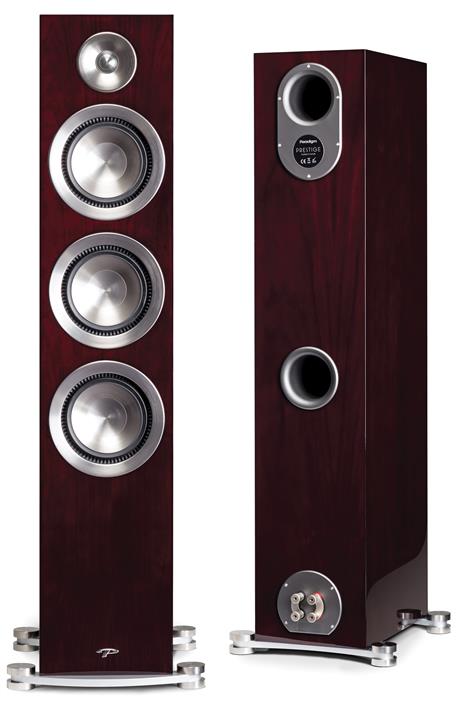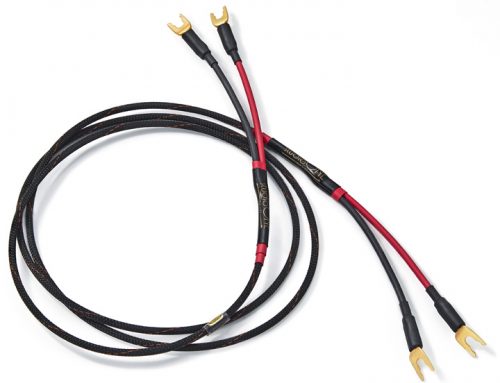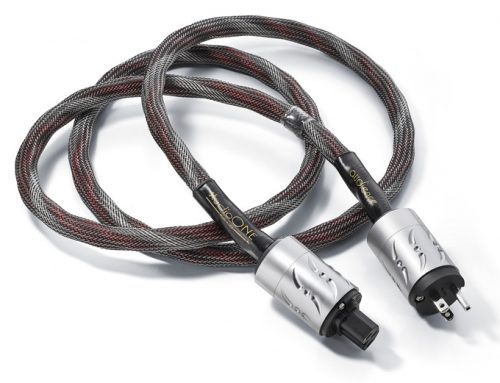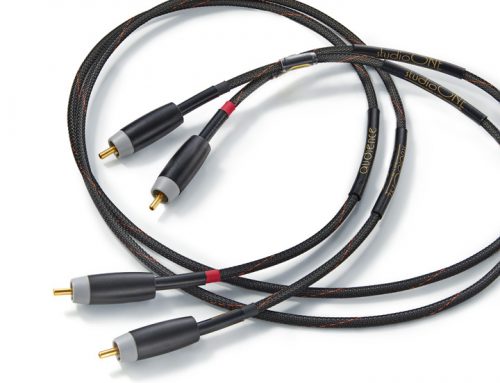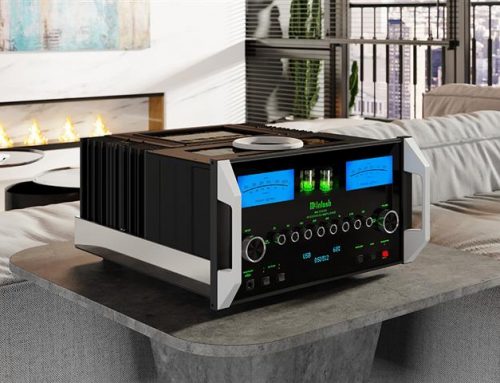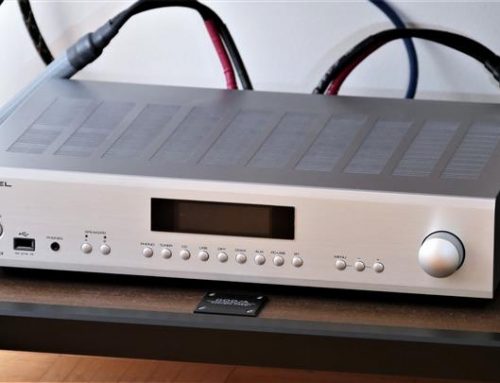If you are a Canadian music or home theatre enthusiast, chances are good that when someone brings up the subject of loudspeakers the first brand name that usually comes to mind will probably be Paradigm. Given the consistency with which this brand has, over three decade, offered such incredibly good value at every speaker price point, they fully deserve this distinction. Many Canadians and an ever-increasing number of Americans and Europeans have got into this lovely hobby with a pair of Paradigms as their first true high-end speaker and in so many cases, they are so happy with their purchase that whenever they are bitten by the upgrade bug, there is a good chance that they move up to a better Paradigm loudspeaker.
The Paradigm recipe for success has always been to strive for innovative designs, cutting-edge technology, employing superior materials, keep as much of the manufacturing process in-house and using smart engineering techniques. This has garnered Paradigm hundreds of industry awards and positive reviews.
Over the past couple of decades, many high-end audio brands have chosen to move all or part of their production overseas to take advantage of lower labour, material and ancillary costs. Paradigm has chosen a different path. They have chosen to continue to be proudly Canadian through and through by continuing to handcraft their products in the true north, strong and free.
Rather than rest on their laurels, the folks at Paradigm have constantly strived not just to maintain but enhance their reputation for offering some of the best performance, build quality and aesthetics at each speaker price point from entry level to the high 4-figure price range. Their latest ‘Prestige’ range is no exception. The new line offers seven models including three floor-standing models, one bookshelf, two center channels units and a surround channel option. Two matching subwoofers will be available this year.
What immediately struck me about the new range was the aesthetics. This is by far, the smartest, sleekest, most elegant look that Paradigm has ever offered. The clean lines have been achieved by utilizing concave dust caps and low-diffraction brushed anodized aluminum trim rings. Hiding all the fastening hardware from view, unlike many previous models, makes the Prestige Series very pleasing to the eyes. The cabinets have a lovely finish and the magnetically attached grill rounds off this sharp, sophisticated tuxedo look.
All the drivers for the Prestige range have been designed and mostly manufactured in-house in order to achieve higher consistency and tighter tolerances. The cabinets are cloaked in real Walnut hardwood veneer and offered in a choice of gloss finishes. The Walnut option offers a smooth satin finish with a nice wood grain, while the Midnight Cherry and Piano Black choices give you a hand-rubbed, high-gloss finish. My review sample was the Prestige 85F speaker in a Midnight Cherry finish ($2,349 each).
The unpacking of the speakers was quite straightforward. Sitting atop the speakers was the owners’ manual and footer instructions. I spent some time reading through the manual and was heartened to see that it very thoughtfully included not just the usual instructions and information but also tips on how to position the speakers so as to get the minimum possible interference from the acoustics of the listening room. It also included advice on how to choose an appropriate amplifier and this included the sage advice that you are more likely to damage speakers with under-powered amplifiers rather than overpowered ones.
The 85F has a stainless steel and aluminum base that is designed not just to isolate and subdue cabinet vibrations but also to make it easy to switch from the hard floor option to the spike setting for carpets. The default setting is for a hard floor and if you have carpet instead, you need to unscrew the footer and reverse the insert so that the speaker sits on spikes that reach through the carpet to give the speakers better coupling to the floor below the carpet. These are height adjustable to ensure proper alignment of the speakers, which is necessary for optimum performance. A very thoughtful addition is a pair of gloves to let customers handle and move the speakers without damaging the exquisite finish. I would have liked to see Paradigm also include a spirit level to help the customer achieve the proper alignment.
I used the Cardas method to locate the speakers in my auditioning room and after levelling them, I tried to attach speaker cables. I found that the terminals behind the speaker are so close to the floor, I was not able to attach my better speaker cables which happen to be too stiff to bend enough to fit from under the terminals. Paradigm recommended a break-in period of 48 hours so while that was being done, I got clued in with the engineering behind these speakers.
The 85F has an unusual 2.5-way crossover that utilizes three woofers at low frequencies while the bass/midrange driver does double duty in handling the human voice and the musical instruments without requiring the “crossing over” to a dedicated midrange driver. Also off the beaten path is a pure aluminum dome tweeter design, which Paradigm calls “X-PAL”. This tweeter is protected by a Paradigm proprietary designed Perforated Phase-Aligned (PPA) Tweeter Lens. The PPA also acts as a phase plug which blocks out-of-phase frequencies with the aim of delivering a smoother, more extended reproduction of the high frequencies especially at higher volume levels. The tweeter also has a Finite Element Analysis (FEA) optimized pole piece which helps focus the magnet’s energy to boost efficiency and response time while lowering the tweeters resonance frequency, with the aim of delivering cleaner, more accurate sound. The tweeter mechanism is cooled with a ferrofluid made by Ferrotec. This fluid is a colloidal suspension of magnetic nano particles in a liquid carrier with low volatility and high thermal stability.
The cabinet is constructed from heavy-duty 3/4-inch MDF with optimally placed interior bracing to minimize resonance. The front baffle has a thickness of one inch to help it maintain its composure even when the excursions of the cones of the driver units attached to it are at their maximum. The excursions of the cones have been enhanced to deliver a gain of 3dB. This has been achieved by using Paradigm’s patented Active Ridge Technology (ART) surrounds which are made in-house and which have been over-molded directly onto each cone. The surrounds are made from injection-moulded thermoplastic elastomer, which, according to Paradigm, make them more reliable, durable and longer lasting. Paradigm has also put in a lot of work to make the spider work better and have greater longevity. The spiders in the driver units of the Prestige series are now made out of Nomex, which is apparently 10-times, stronger than the cotton based variety that is ubiquitous in the industry. The driver unit die-cast baskets have also been reinforced and now have heat sinks integrated into them to enable them to handle higher power levels thereby enabling them to produce better bass and dynamics while suffering from less power compression. The mid-woofers and woofers now have a 1.5-inch voice coil motor with Kapton formers and Nomex collars along with wire / insulation that can withstand higher temperatures up to 600 degrees Fahrenheit / 315°C.
To complement all the advances in the driver units Paradigm has equipped the Prestige Series with more technologically advanced crossover networks. These now contain high voltage film and bi-polar capacitors, heavy gauge inductors and better performing ceramic stand-off resistors. According to Paradigm, these crossovers allow the various driver units to work more seamlessly to blend the high, mid and low frequencies of the music into a more cohesive whole.
A big problem with many of the reasonably priced speakers I have auditioned is the way the vibration from the driver units creeps into the speaker enclosure causing them to resonate and adversely effect the quality of the reproduced sound. Paradigm has addressed this by using butyl rubber driver fasteners that are employed in tandem with critically placed isolation inserts and gaskets that do a much better job at decoupling the driver units from the speaker enclosure. This minimizes the tendency of the enclosure to resonate and thereby produce sounds in disharmony with the driver units.

